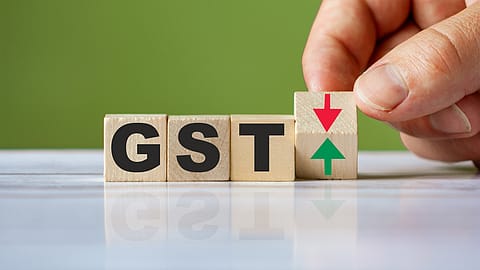Six weeks after GST 2.0, most consumers yet to see lower prices on food and medicines
According to a new LocalCircles survey, over four in ten respondents reported that the reduced GST rates on packaged food items and medicines have not translated into lower prices at the retail level, despite policy mandates and official advisories.

Six weeks after the rollout of GST 2.0, a majority of Indian consumers say they have yet to see any real benefit of the tax rate cuts announced by the government.
According to a new LocalCircles survey, over four in ten respondents reported that the reduced GST rates on packaged food items and medicines have not translated into lower prices at the retail level, despite policy mandates and official advisories.
The survey, conducted across 342 districts and covering over 53,000 consumers, found that 42% of packaged food buyers and 49% of medicine buyers “explicitly stated no benefit received” from the GST rate reductions announced on September 22, 2025.
“While policy changes have been enacted on paper, the actual downward translation into shelf-prices and invoices remains patchy,” LocalCircles said in its report. “For many everyday goods like FMCG and medicines, the tax reduction hasn't yet been fully translated into savings for the buyer.”
GST 2.0 had reduced tax rates for around 80 goods and services. For packaged foods, rates were cut from 12% and 18% to 5%, while for medicines, several drugs were moved from 12% or 18% to 5%, and some life-saving drugs to 0%. The National Pharmaceutical Pricing Authority (NPPA) had directed manufacturers to revise MRPs or issue supplementary price lists to reflect the lower tax burden. Yet, LocalCircles’ findings suggest compliance remains uneven.
In the case of medicines, 21% of consumers confirmed receiving the full benefit of lower GST, 30% said they received partial benefit, and nearly half - 49% - reported no benefit at all. The report noted that “small chemists and distributors are facing losses because they bought stock under old (higher) GST rates and now must sell at lower tax rates.” Many of these traders, unregistered under GST or operating under the composition scheme, are unable to claim input tax credit, making it difficult to adjust prices immediately. The All India Organisation of Chemists and Druggists (AIOCD) has reportedly sought a three-month transition period to clear old stock at old MRPs without penalty.
The situation with packaged foods is similar. Only 13% of respondents said they had received the full benefit of the GST reduction, 33% reported partial benefit, and 42% said they had received none. Retailers, according to the report, have been “reluctant to sell at lower prices without brands or manufacturers agreeing to make up for their losses.”
Recommended Stories
However, the picture looks slightly better in the case of white goods, consumer electronics, and automobiles. For appliances and electronics, 33% of consumers confirmed receiving the full benefit of lower GST, while another 33% received partial benefit. Only 28% said they saw no change.
Automobiles emerged as the most compliant category, with nearly half (47%) of vehicle buyers confirming they received full GST benefits and 34% acknowledging partial benefits. Only 14% said they received none. The sector has also seen a post-GST sales surge, with 4.7 lakh passenger vehicles and over 2 lakh electric vehicles sold in October, reflecting an 11% month-on-month increase.
Why is there a gap
The report highlights a persistent gap between policy intent and real-world implementation. “The key issue being retailers of packaged food and medicines selling their old stocks at old and higher prices instead of the new GST rates,” it said. “Manufacturers or brands and their supply chain entities haven’t provided much support till date to absorb part of the losses they would incur if they were to sell old stock at revised prices.”
While GST 2.0 was expected to bring relief to consumers and boost purchasing power, six weeks on, many are still waiting to see that promise reflected on store shelves and medical bills. Until manufacturers, retailers, and regulators align on the transition, the benefits of lower tax rates may remain, as the report puts it, “more aspirational than actual.”